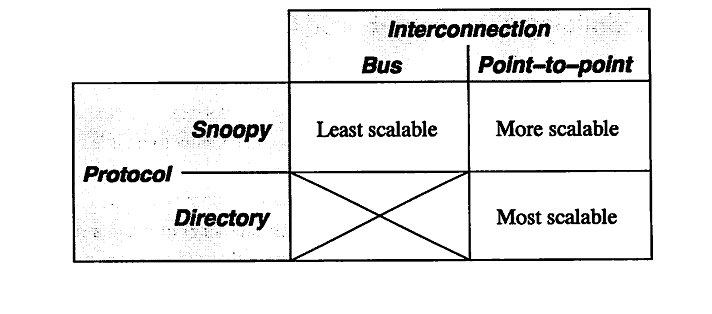CSC/ECE 506 Spring 21012/11a ht: Difference between revisions
| Line 1: | Line 1: | ||
= Introduction = | =Introduction= | ||
Revision as of 20:26, 13 April 2012
Introduction
When dealing with a relatively small number of processors (8-16), according to Solihin 320, using a bus based shared memory structure is fine. Unfortunately, when you need to provide a shared memory structure for processors much greater than that, you will need a different set of organization. This new organization is needed due to the physical limitations of the bus. There are two ways you can create such a system. These include Distributed Shared Memory (DSM) or Non-Uniform Memory Access (NUMA). The benefits of having a DSM and NUMA is that we can now scale to a larger amount of processors. The disadvantage is that scaling in such a way may not be the most cost-effective solution, Solihin 320. For the remainder of this section, we will be discussing the performance of DSM's.
According to Solihin 320, there are two aspects that restrict the scalability of bus-based multiprocessors. These include the physical limitations of interconnections and the limitations of the protocol. To explain in detail, on a bus-based system, adding a processor will not affect any other physical restrictions on the system. Unfortunately, when adding a new processor, you will be reducing the speed of the bus. Second, the protocol needed to keep coherence does not scale well. As you increase the number of processors to the system, the amount of traffic also increases. This means that you might run the risk of overwhelming the bandwith. According to Solihin, there are a few ways that we can mitigate this problem. The following is from 321 of the Solihin textbook.

From the table, we can see that there is three ways to scale a multiprocessor system. The first being a single bus system. This is the least scalable due to the limitations of the bus wire itself. As you add processors you will decrease the bus speed due to having to increase the wire length. Also, you run into an issue of overwhelming the bus due to the amount of traffic. The second way is to use a point-to-point bus system. This allows for the speed of the bus to remain relatively fast, but since the traffic will also scale with the number of processors, there will be a limitation due to overwhelming the bus system with traffic. Lastly, the most scalable system to date is using a directory system. This allows for the bus to remain fast due to the short wires, and the bus traffic to remain low since the directory holds information on cache locations.
For dis